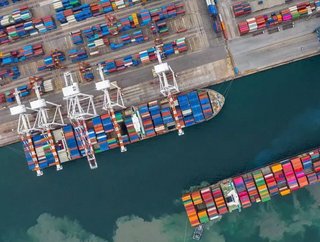Six ways to create a more resilient supply chain

COVID-19 has drastically changed the way supply chains operate and highlighted how fragile they really are. With the landscape now completely different, supply chain leaders must balance cost and operational efficiency with greater resilience.
Following a recent Gartner survey, just 21% of respondents stated that they have a highly resilient network today, which means good visibility and the ability to switch sourcing, manufacturing and distribution activities around quickly. The majority of supply chain leaders understand that becoming more resilient is essential. However, rebalancing the cost of efficiency and resilience isn’t a simple task. These six key strategies will help introduce that resilience into networks.
1. Inventory and capacity buffers
Buffer capacity is the easiest method to enhance resilience, whether that be from underutilised production facilities or inventory in excess of safety stock requirements. However, buffers are expensive and supply chain leaders might have a difficult time justifying that to the C-suite. Buffers can be used in the form of surge capacity for new product launches, while organisations can also create buffer capacity by leveraging contract manufacturers strategically for their surge needs.
2. Manufacturing network diversification
As a result of the US-China trade war, many companies have started to diversify their sourcing or manufacturing bases. For some, this has meant transitioning to new suppliers outside of China or asking existing partners to supply them from elsewhere in Asia or in countries such as Mexico. Disruptions to supply chains have risen during the past few years and this has meant that the cost of retaining multiple supply locations can be seen as more of a cost of doing business, rather than an inefficiency.
3. Multisourcing
In 2011, major natural disasters in Japan and Thailand disrupted supply chains worldwide and exposed companies’ reliance on single sources of supply. In the automotive sector, almost finished cars couldn’t be shipped to customers due to missing and often inexpensive components. But, multisourcing is an obvious way to mitigate this risk. In order to create a multisourcing strategy, supply chain leaders must know their supplier networks in detail and be able to categorise suppliers not just by spend, but also revenue impact if a disruptive event happens.
4. Nearshoring
Beyond multisourcing, some companies seek to reduce geographic dependence in their global networks and decrease cycle times for finished products. Regional or local supply chains can be more expensive as they add more players and complexity into the ecosystem, however, allows for more control over inventory and can move the product closer to the end consumer.
5. Platform, product or plant harmonisation
The more regionalised the network, the more harmonised plant technology has to be to enable products to move seamlessly across the network. The use of common vehicle platforms for a range of models in the automotive industry is one of the most recognised examples of such harmonisation. Standardising components across multiple products, particularly those that aren’t visible or important to the customer, is another form of harmonisation. It simplifies sourcing policies and creates opportunities to place higher volumes among multiple suppliers, which scales efficiency.
6. Ecosystem partnerships
The COVID-19 pandemic has showcased the need to have a diversified approach to sourcing. At the same time, collaboration with strategic raw material suppliers and external service partners are critical to ensure better preparedness and resilience for the future. For companies without the scale to support several locations on their own, robust relationships with contract manufacturers and global 3PLs can be key to diversifying production and distribution to different countries.
Gartner’s survey data has shown that approximately half of supply chain companies are leveraging external manufacturers or examining how they can support product moves, with a similar proportion engaging logistics partners for this same purpose.






